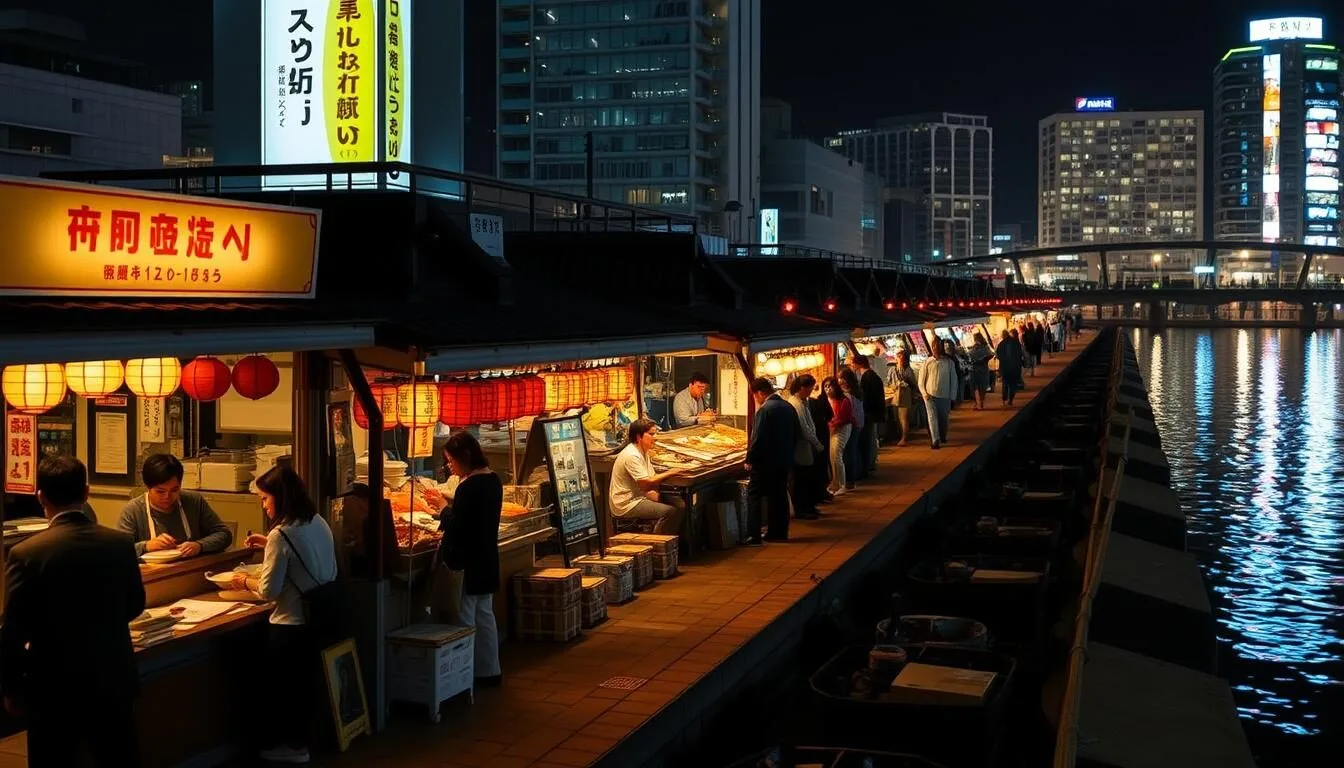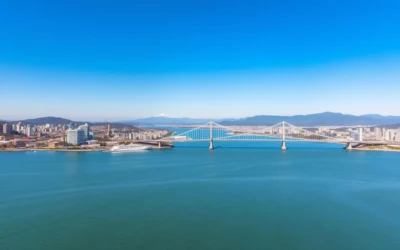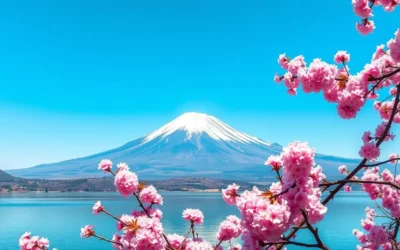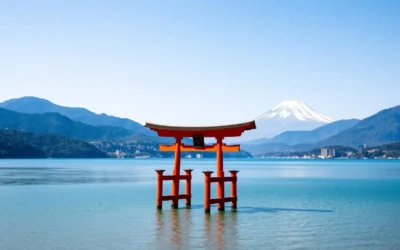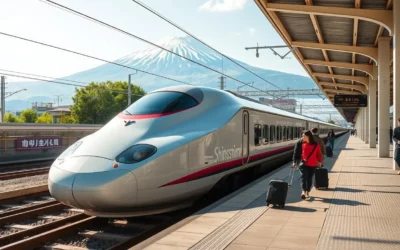✓ Tours & Activities ✓ Tours & Activities
Did you know that Fukuoka is home to over 150 yatai food stalls, the highest concentration in Japan? These iconic open-air street food vendors have become the symbol of this vibrant city, offering an authentic dining experience you won’t find anywhere else in the country. As Japan’s gateway to mainland Asia for over 1,000 years, Fukuoka blends ancient traditions with modern innovation in a way that makes it one of Japan’s most livable—and visitable—cities.
Getting to Fukuoka
Fukuoka is exceptionally well-connected both internationally and domestically. Fukuoka Airport is just 5 minutes from the city center by subway—one of the most convenient airport-to-city connections in the world. The city also serves as a major rail hub, with shinkansen (bullet train) connections to Tokyo, Osaka, and other major Japanese cities.
Ready to Book Your Trip to Fukuoka?
Find the best flight deals to start your Fukuoka adventure.
By Air
Fukuoka Airport offers direct international flights from Seoul, Shanghai, Taipei, Hong Kong, and other Asian cities. Domestic connections are available from Tokyo (1.5 hours), Osaka (1 hour), and other major Japanese airports. The airport’s domestic terminal connects directly to the Fukuoka City Subway, getting you downtown in just 5 minutes.
By Train
Hakata Station is Fukuoka’s main rail hub and the terminus for both the Sanyo and Kyushu shinkansen lines. Travel times: 5 hours from Tokyo, 2.5 hours from Osaka, and 1 hour from Hiroshima. The JR Kyushu Rail Pass offers unlimited travel throughout Kyushu and can be a cost-effective option if you plan to explore the region.
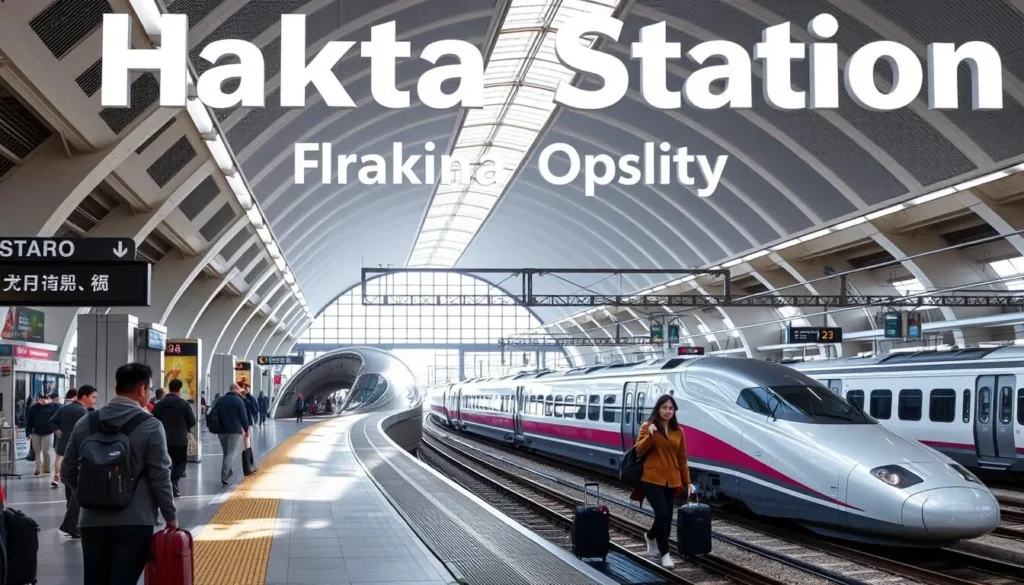
Best Time to Visit Fukuoka
Fukuoka enjoys a mild climate year-round, making it a pleasant destination in any season. However, each time of year offers its own unique experiences and natural displays.
Spring (March-May)
Cherry blossom season transforms the city, with Maizuru Park and Nishi Park offering spectacular viewing spots. Dazaifu Tenmangu Shrine displays 6,000 plum trees in bloom from late February. Temperatures range from 10-22°C (50-72°F).
Summer (June-August)
Experience the famous Hakata Gion Yamakasa Festival in July, when teams race through the streets carrying one-ton decorative floats. Summer is hot and humid (25-32°C/77-90°F), but perfect for enjoying the beaches of nearby Itoshima Peninsula.
Fall (September-November)
Autumn brings comfortable temperatures (15-25°C/59-77°F) and stunning foliage at Ohori Park and Mt. Hiko. The little island of Nokonoshima offers beautiful displays of cosmos flowers, creating picture-perfect landscapes.
Winter (December-February)
Winters are mild compared to other parts of Japan (5-12°C/41-54°F). This is the perfect season to enjoy Fukuoka’s famous hot pot dishes like motsunabe and warm up with a steaming bowl of tonkotsu ramen at a cozy yatai stall.
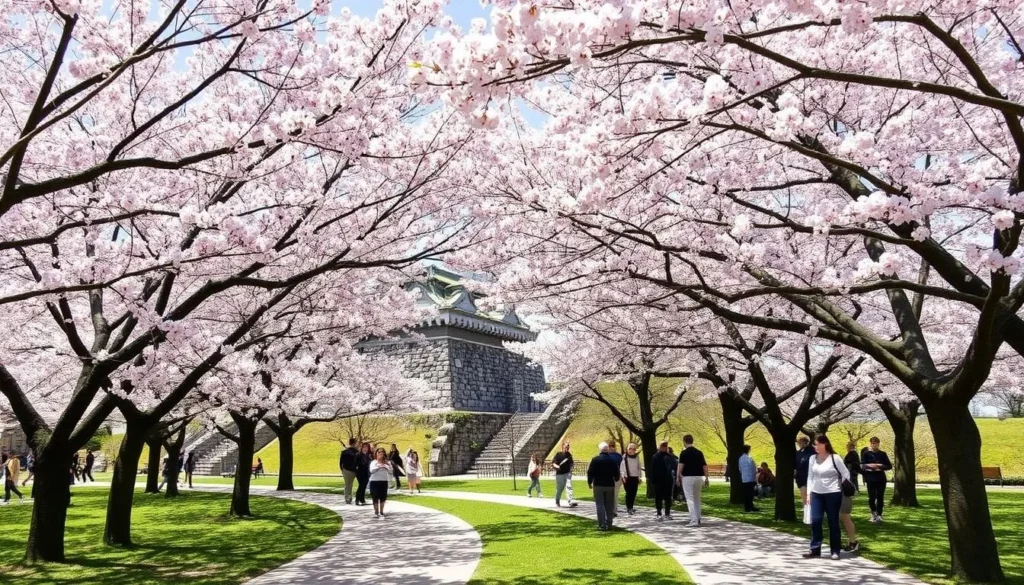
Getting Around Fukuoka
Fukuoka is a relatively compact city with excellent public transportation, making it easy to navigate. Many of the main attractions are within walking distance of each other, especially in the Hakata and Tenjin districts.
Subway
The Fukuoka City Subway has three lines connecting major areas. The Airport Line runs from Fukuoka Airport to Hakata Station and Tenjin. A one-day pass costs 640 yen and offers unlimited rides. Signage is available in English, making navigation simple for international visitors.
Bus
An extensive bus network covers areas not reached by subway. The 100 Yen Bus loops around the city center, making it convenient for sightseeing. The Fukuoka Tourist City Pass (900 yen) offers unlimited use of buses and subways for one day, plus discounts at various attractions.
Rental Car
While not necessary within the city, a rental car is ideal for exploring the surrounding countryside, beaches of Itoshima, or taking day trips to places like Mount Aso. International driving permits are required for foreign visitors.
Explore Fukuoka at Your Own Pace
Rent a car to discover Fukuoka Prefecture’s scenic countryside and coastal areas.
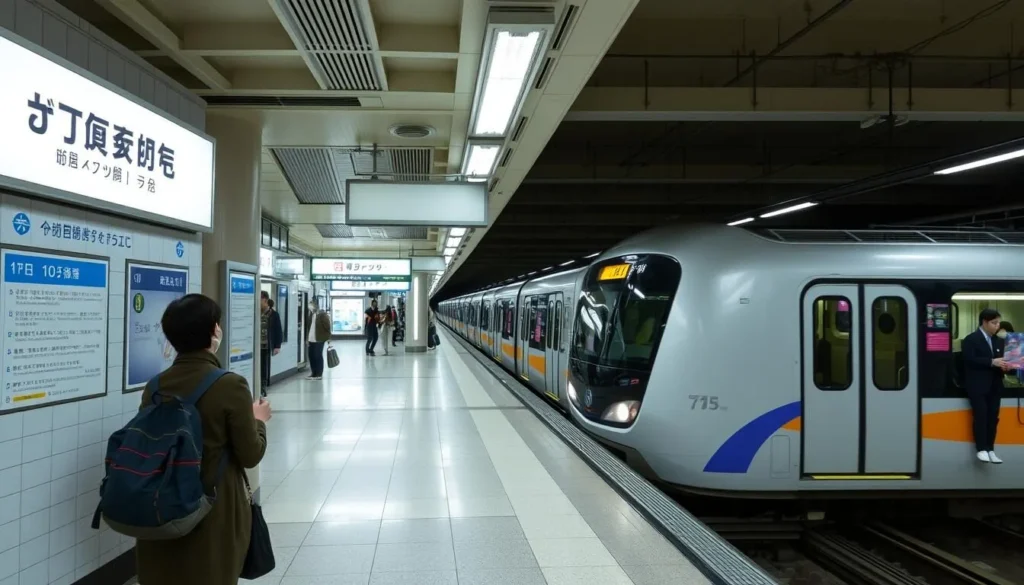
Where to Stay in Fukuoka
Fukuoka offers accommodation options for every budget and preference. The city’s compact size means that staying in any of the central areas puts you within easy reach of major attractions, dining, and shopping.
Hakata
The area around Hakata Station is perfect for first-time visitors and those prioritizing convenience. You’ll find everything from luxury hotels to budget-friendly options, plus easy access to transportation, shopping at Canal City, and numerous dining options. Top attractions like Kushida Shrine and Sumiyoshi Shrine are within walking distance.
Nakasu
This entertainment district on a small island between the Naka and Hakata rivers is famous for its concentration of yatai food stalls. It’s the perfect area for food lovers and night owls, with countless restaurants, bars, and clubs. The original Ichiran ramen shop is located here, and the riverside setting offers picturesque evening strolls.
Tenjin
Fukuoka’s main shopping and entertainment district is ideal for those who want to be in the heart of the action. The area features department stores, boutiques, and the underground shopping mall Tenjin Chikagai. It’s also home to many of the city’s trendiest restaurants and cafes, making it popular with younger travelers.
Find Your Perfect Stay in Fukuoka
From luxury hotels to budget-friendly options, find accommodations that match your style and budget.
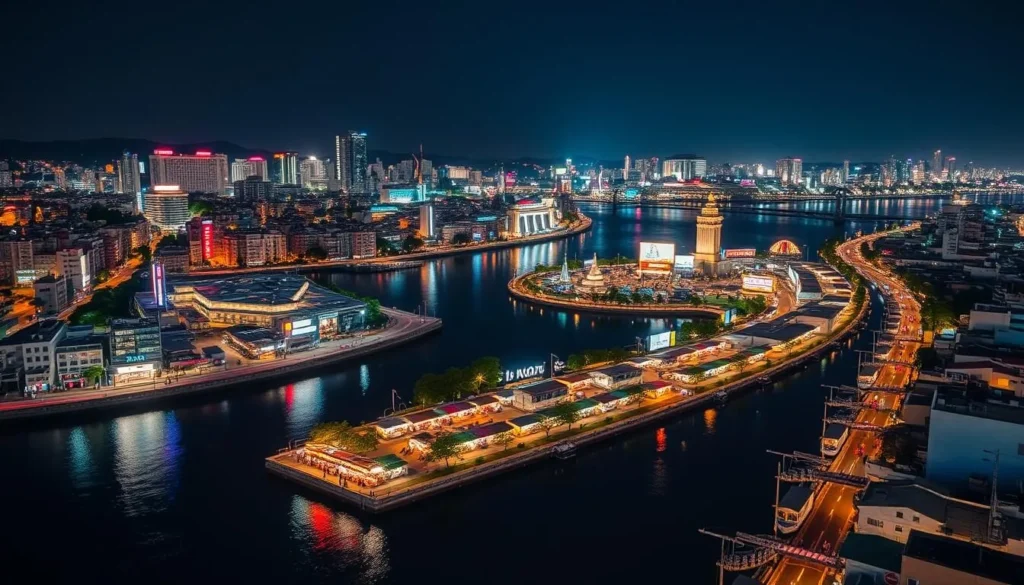
Top Attractions in Fukuoka City
Explore Hakata’s Historic Temples and Shrines
Kushida Shrine
Built in 757, Kushida Shrine is considered the guardian shrine of Fukuoka and the spiritual heart of the Hakata district. It plays a central role in the famous Hakata Gion Yamakasa Festival held every July, when elaborately decorated floats are displayed in the shrine grounds. Don’t miss the “Okage Stone” – legend says that if you can lift it, your wish will come true.
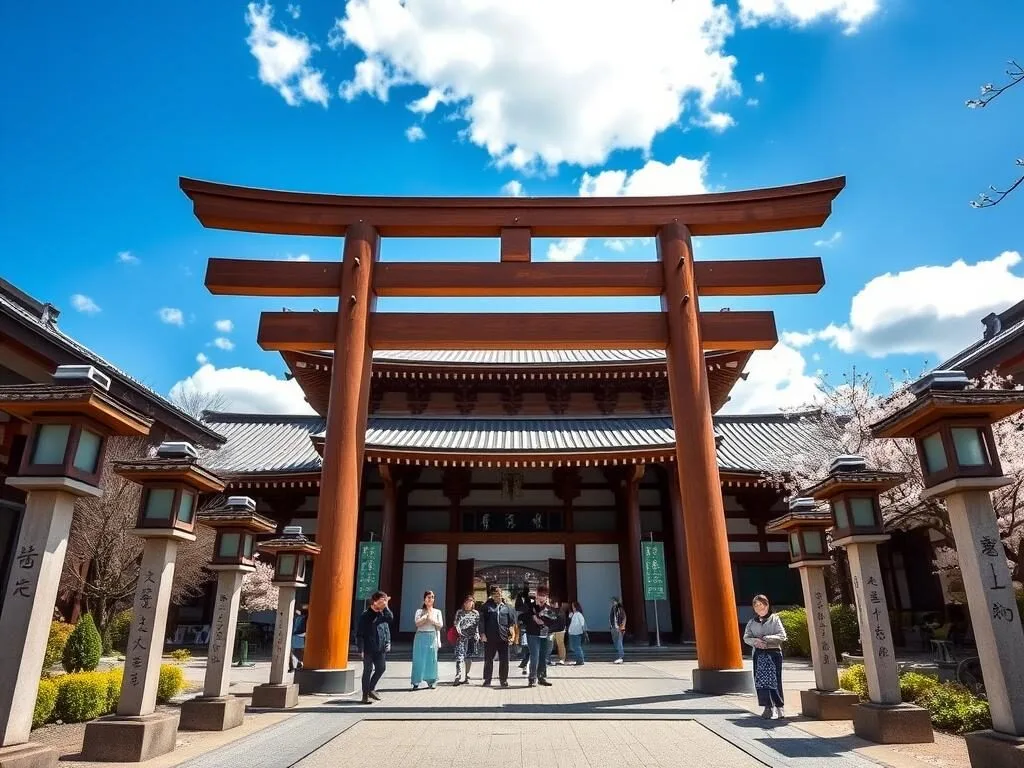
Tochoji Temple
Home to the largest wooden seated Buddha statue in Japan, the 10.8-meter-tall “Fukuoka Daibutsu.” The temple was founded in 806 by Kobo Daishi, one of Japan’s most important religious figures. After admiring the Buddha, venture into the basement to experience the “Tunnel of Hell,” a dark passage that leads to a rotating image of paradise, symbolizing the journey from darkness to enlightenment.
Shofukuji Temple
Japan’s first Zen temple, established in 1195. While the temple buildings themselves are not open to the public, visitors can stroll through the peaceful grounds and admire the traditional architecture. The atmosphere here offers a serene escape from the bustling city, with monks occasionally seen going about their daily routines.
Explore Fukuoka’s Cultural Heritage
Discover the city’s rich history with a guided half-day tour of Fukuoka’s most significant cultural sites.
Relax in Fukuoka’s Urban Oases

Ohori Park
This spacious public park features a large pond that was once part of Fukuoka Castle’s moat system. A 2km walking path circles the pond, offering beautiful views in all seasons. The park includes a traditional Japanese garden, art museum, and tea house. Visitors can rent swan-shaped paddle boats or simply relax on the grassy areas. It’s especially beautiful during cherry blossom season and fall foliage.
Maizuru Park and Fukuoka Castle Ruins
Once home to one of Japan’s largest castles, Maizuru Park now preserves the stone walls and foundations of Fukuoka Castle. Built in the early 1600s, the castle was dismantled after the Meiji Restoration. Today, visitors can explore the ruins, climb the restored Tamon turret for city views, and enjoy seasonal flowers. The park transforms into one of Fukuoka’s top cherry blossom viewing spots each spring.
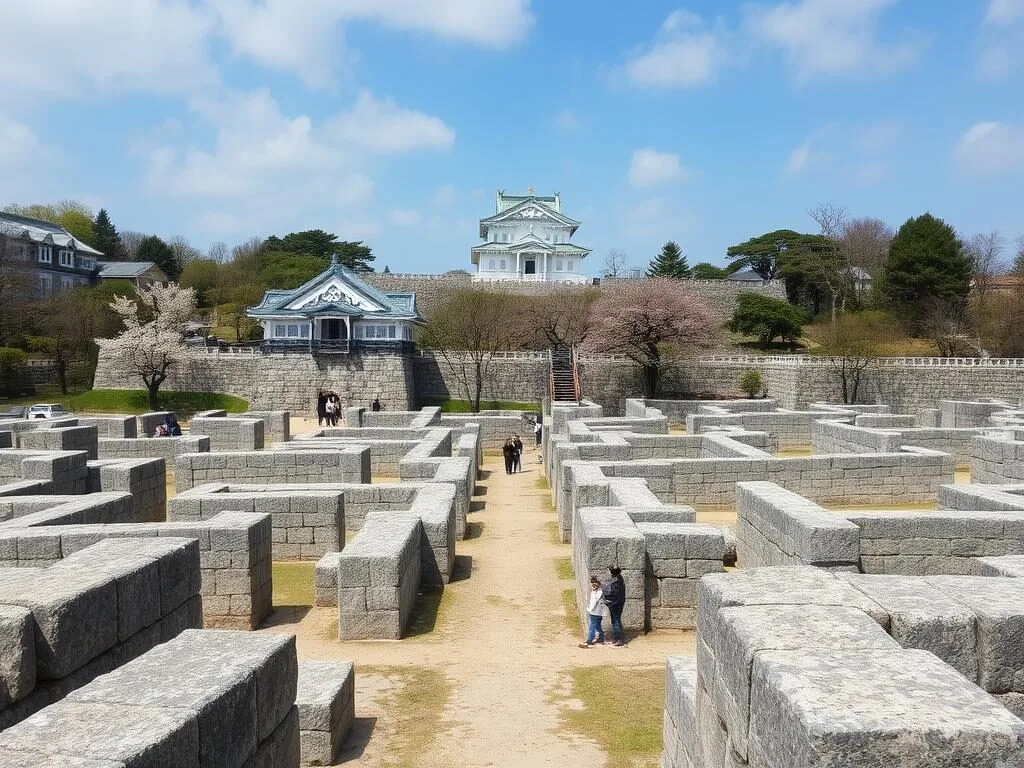
Experience Modern Fukuoka
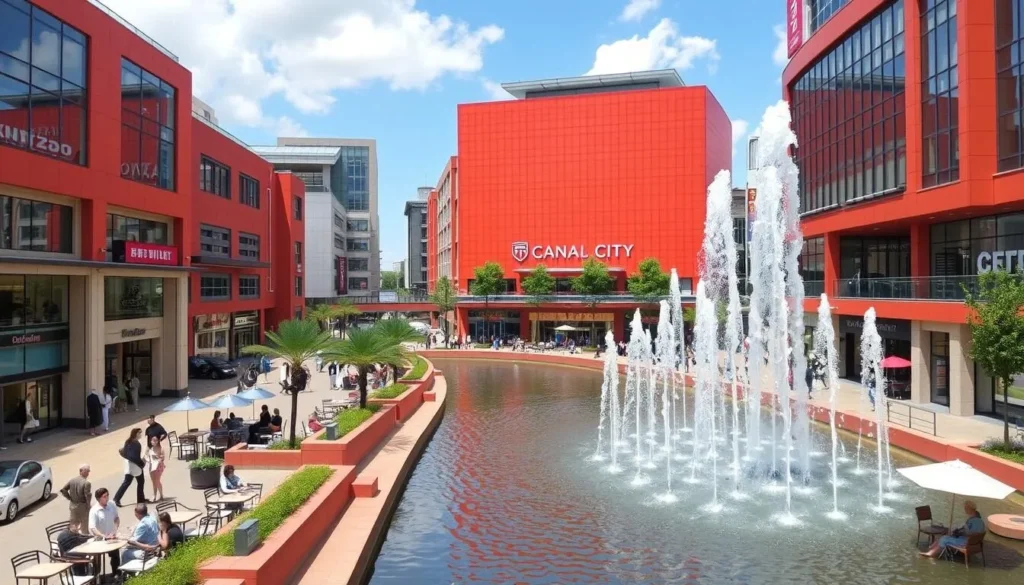
Canal City Hakata
This “city within a city” is a massive shopping and entertainment complex built around an artificial canal. The complex houses over 250 shops, restaurants, theaters, and hotels. Don’t miss the spectacular fountain shows held regularly in the central plaza. The complex is also home to Ramen Stadium, where you can sample different regional ramen styles from across Japan.
Fukuoka Tower
Standing 234 meters tall, Fukuoka Tower is Japan’s tallest seaside tower. The observation deck at 123 meters offers 360-degree views of the city, Hakata Bay, and on clear days, all the way to the Genkai Sea. The tower is especially beautiful at night when illuminated, and the lighting themes change with the seasons and for special events.
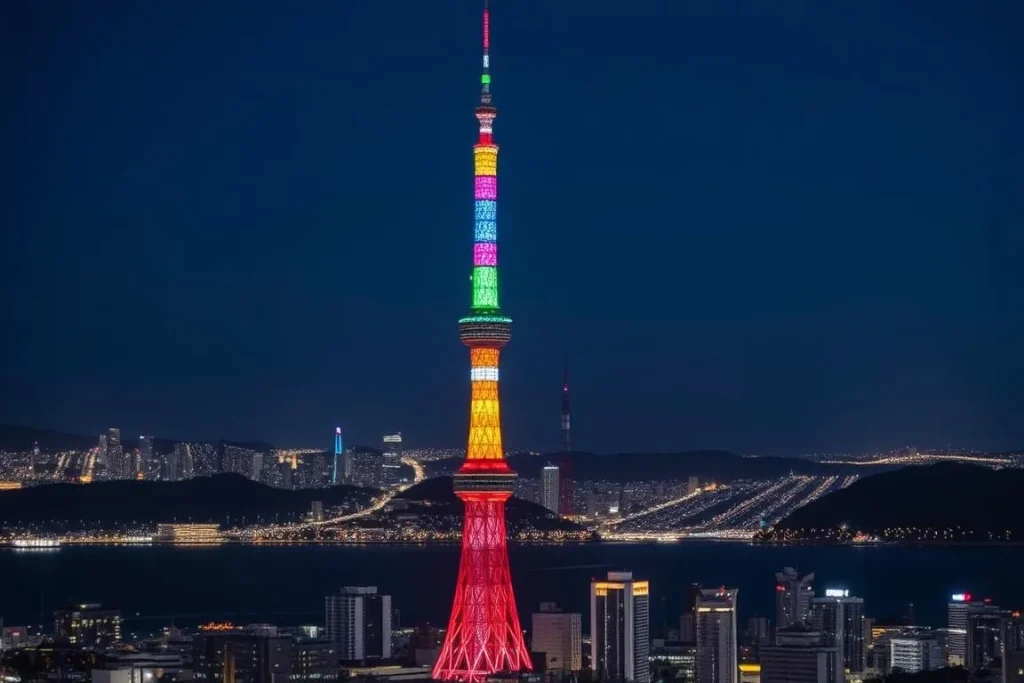
Food & Dining in Fukuoka
Fukuoka is widely considered one of Japan’s culinary capitals, with several dishes that originated here now famous throughout the country and beyond. From street food to fine dining, the city offers unforgettable gastronomic experiences.
Must-Try Local Specialties
Hakata Ramen
Fukuoka’s signature dish is tonkotsu ramen (known locally as Hakata ramen), featuring a rich, creamy pork bone broth and thin, straight noodles. The broth is simmered for hours until it turns milky white, creating an intensely flavorful base. Try it at the original Ichiran branch in Nakasu, where private dining booths let you focus entirely on your bowl, or visit Shin-Shin near Tenjin for a more traditional setting.
Mentaiko
Spicy pollock roe is another Fukuoka specialty, typically served as a side dish, mixed with pasta, or used as a filling in onigiri rice balls. The vibrant red roe has a unique spicy-salty flavor that’s become popular throughout Japan. Visit Ganso Hakata Mentaiju for high-quality mentaiko served in various preparations, or try mentaiko-filled crackers as a souvenir.
Motsunabe
This hearty hot pot dish features beef or pork intestines simmered with cabbage, garlic, chives, and other vegetables in a soy sauce or miso-based broth. Despite what might sound like challenging ingredients, the dish is delicious and comforting, especially in winter. Yamanaka in the Akasaka district serves an excellent version that’s earned a Michelin Bib Gourmand recognition.
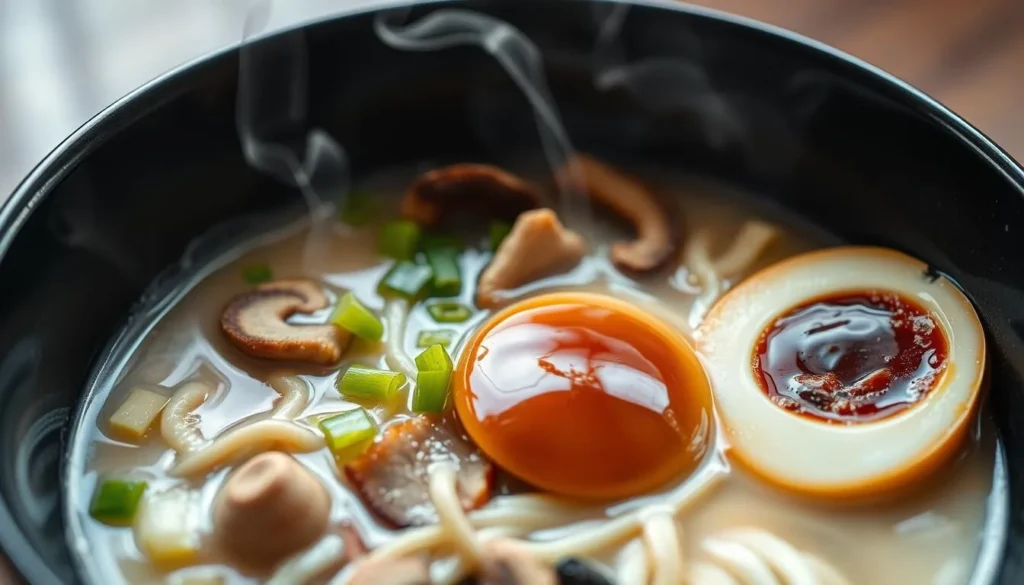
Yatai Food Stall Experience
No visit to Fukuoka is complete without dining at a yatai, the city’s iconic open-air food stalls that have become symbols of local food culture. These small mobile stalls typically seat just 7-8 people, creating an intimate dining experience where you’ll likely chat with both the chef and fellow diners.
The largest concentration of yatai is found along the Nakasu riverfront, where about 20 stalls set up each evening around 6 PM and operate until midnight or later. Each stall specializes in different dishes, from ramen and oden (simmered ingredients in dashi broth) to yakitori (grilled chicken skewers) and tempura.
The experience is as much about the atmosphere as the food—sitting shoulder-to-shoulder with locals and travelers alike, enjoying simple but delicious dishes while sipping on beer or shochu under the glow of paper lanterns creates memories that last long after the meal is finished.
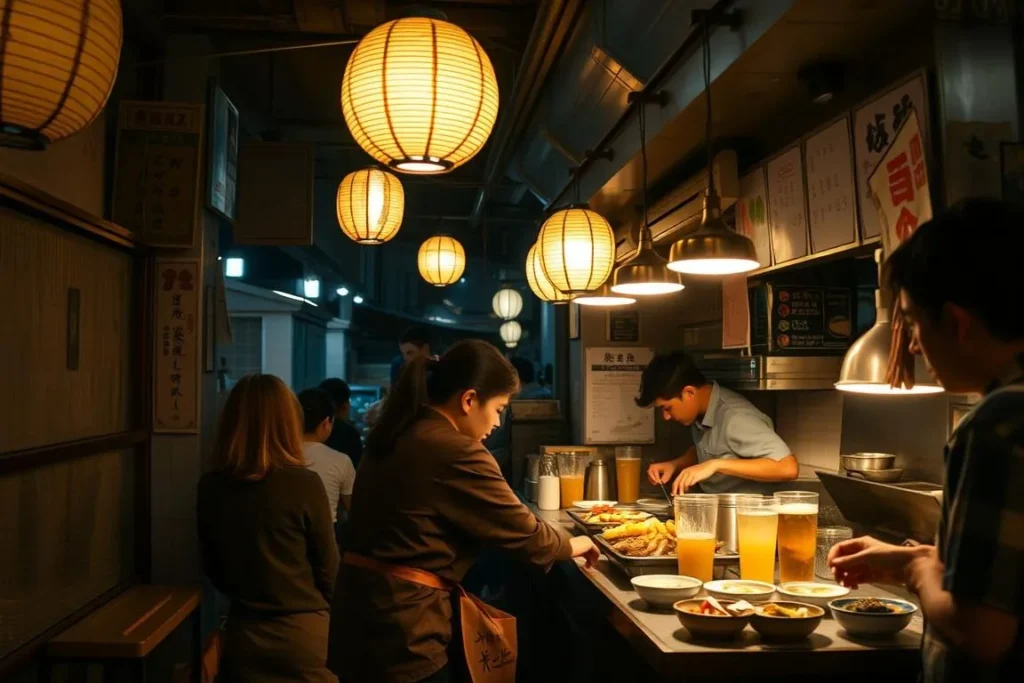
Discover Fukuoka’s Food Culture
Join a guided yatai hopping tour to experience the best of Fukuoka’s street food scene with a knowledgeable local guide.
Day Trips from Fukuoka
Fukuoka’s central location makes it the perfect base for exploring Kyushu’s diverse attractions. These popular day trips offer everything from spiritual experiences to natural wonders, all within easy reach of the city.
Dazaifu Tenmangu Shrine
Just 30 minutes from Fukuoka by train, Dazaifu is home to one of Japan’s most important Shinto shrines. Dedicated to the deity of learning, Sugawara Michizane, the shrine is especially popular with students praying for academic success. The approach to the shrine is lined with shops selling souvenirs and local specialties like umegae mochi (sweet rice cakes). In late February, 6,000 plum trees burst into bloom, creating one of Japan’s most spectacular plum blossom displays.
Nanzoin Temple
Home to the world’s largest bronze reclining Buddha statue, measuring an impressive 41 meters long and weighing 300 tons. Located in Sasaguri, about 30 minutes from Fukuoka by train, this Buddhist temple complex is set in a peaceful, forested area. The giant Buddha represents Nehan (nirvana), depicting Buddha at the moment of death. Beyond the main attraction, the temple grounds feature numerous smaller statues and shrines, creating a spiritually rich environment.
Yanagawa River Cruise
Often called the “Venice of Kyushu,” Yanagawa is a castle town crisscrossed by a network of canals originally built for irrigation. Visitors can enjoy punting tours on traditional wooden boats called “donkobune,” propelled by boatmen using long poles. As you glide through the water, boatmen share stories and sometimes sing traditional songs. After your cruise, try the local specialty of steamed eel (unagi) at one of the riverside restaurants.
Nokonoshima Island
Just a 10-minute ferry ride from Fukuoka’s Meinohama Port, this small island in Hakata Bay offers a refreshing natural escape from the city. Nokonoshima Island Park showcases seasonal flowers year-round: rapeseed in winter, cherry blossoms in spring, sunflowers in summer, and cosmos in autumn. The island also features hiking trails, beaches, and panoramic views of Fukuoka’s skyline across the water.
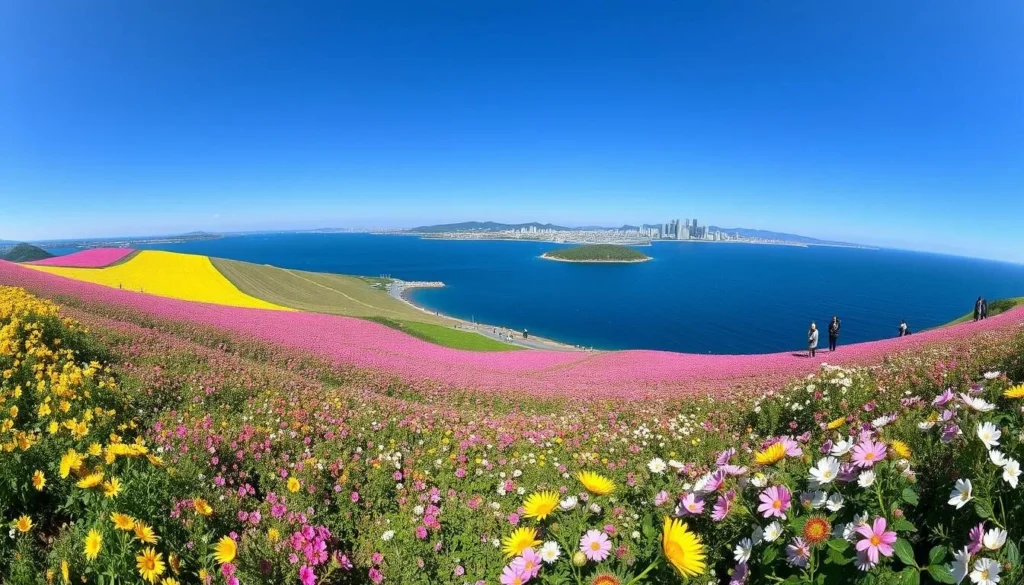
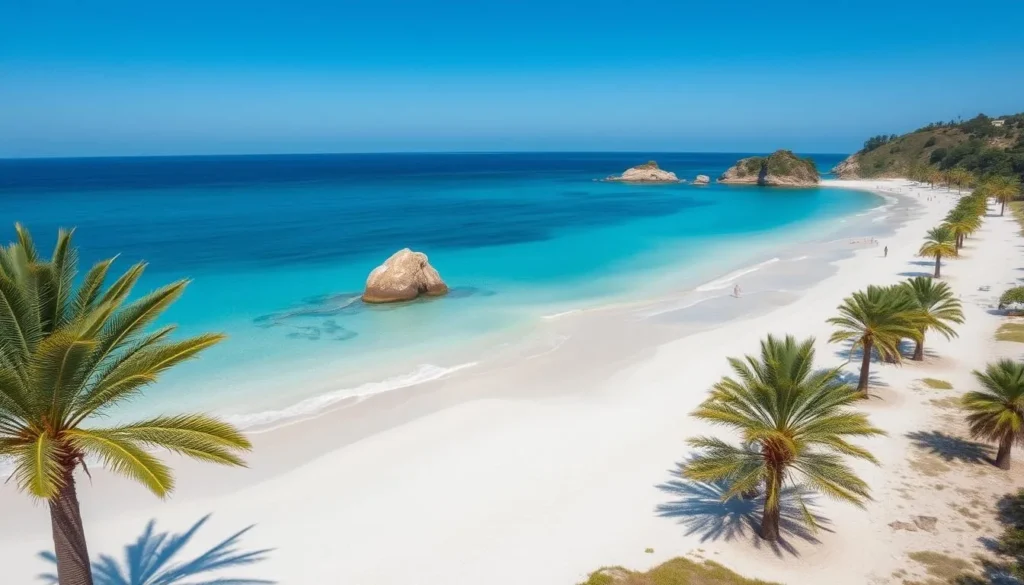
Itoshima Peninsula
Just 30 minutes west of Fukuoka by car or train, Itoshima Peninsula has become increasingly popular for its beautiful beaches, relaxed surf culture, and farm-to-table dining. The area is known for its scenic coastline, including the famous “wedded rocks” at Sakurai Futamigaura beach, connected by a sacred shimenawa rope. Local cafes serve fresh seafood and produce from nearby farms, making this a foodie destination as well as a nature escape.
Practical Tips for Visiting Fukuoka
Transportation Passes
The Fukuoka Tourist City Pass (900 yen) offers unlimited use of subways and buses for one day, plus discounts at various attractions. If you plan to explore beyond the city, consider the JR Kyushu Rail Pass, which provides unlimited travel on JR trains throughout Kyushu for 3, 5, or 7 days. For travel within the city center, the 100 Yen Bus is a cost-effective option that loops around major attractions.
Language
While English signage is common in major stations and tourist areas, having a translation app like Google Translate can be helpful, especially when dining at yatai stalls where menus might only be in Japanese. Learning a few basic phrases like “arigatou” (thank you) and “sumimasen” (excuse me/sorry) is appreciated by locals. Many restaurants offer picture menus or food displays that make ordering easier.
Weather Preparation
Fukuoka has a humid subtropical climate. Summers (June-September) can be hot and humid, so light, breathable clothing and sun protection are essential. The rainy season typically runs from June to mid-July, so pack a compact umbrella or raincoat if visiting during this time. Winters are mild compared to other parts of Japan, but a light jacket is still necessary from December to February.
Local Etiquette
- When dining at yatai stalls, it’s customary to pay individually rather than splitting the bill.
- Remove your shoes when entering traditional ryokan accommodations, certain restaurants, and temple buildings where indicated.
- Tipping is not customary in Japan and may cause confusion. Instead, show appreciation with a sincere “gochisousama deshita” (thank you for the meal).
- When visiting shrines and temples, follow the purification ritual at the water pavilion: rinse your left hand, then right hand, then mouth (but don’t swallow the water), and finally rinse the ladle handle.
- Avoid eating while walking in public, as it’s generally considered impolite. Instead, enjoy street food at the stall or find a designated eating area.
Connectivity
- Free Wi-Fi is available at Fukuoka Airport, major train stations, and many cafes and restaurants throughout the city.
- For constant connectivity, consider renting a pocket Wi-Fi device or purchasing a Japanese SIM card upon arrival at the airport.
- The Japan Connected-free Wi-Fi app helps you find and connect to free Wi-Fi spots across the country.
- Download offline maps of Fukuoka before your trip to navigate without constant internet access.
- Major convenience stores like 7-Eleven, Lawson, and Family Mart offer free Wi-Fi for customers.
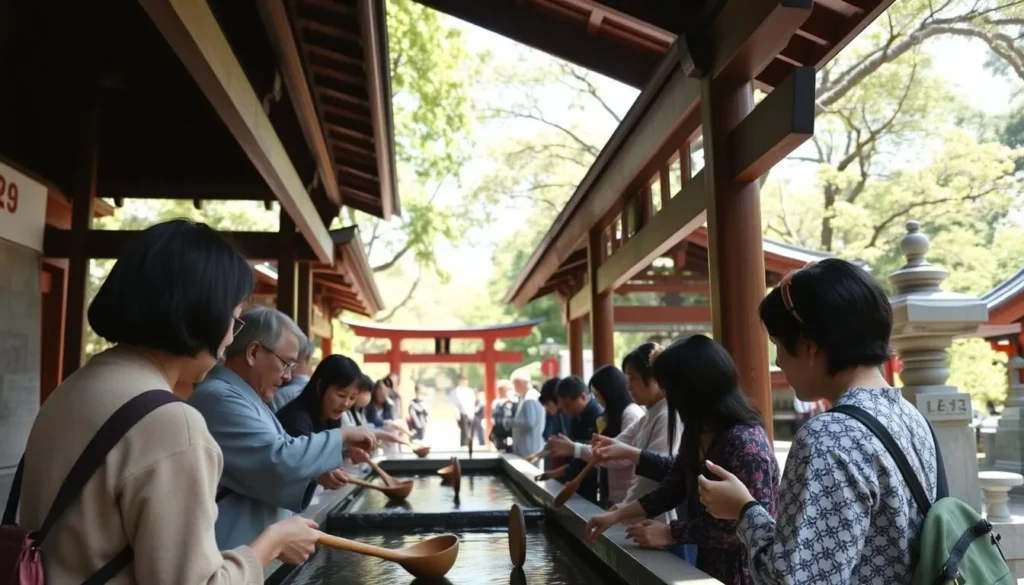
Experience the Magic of Fukuoka
Fukuoka offers a perfect blend of traditional Japanese culture and modern innovation, all without the overwhelming crowds of Tokyo or Kyoto. From slurping authentic Hakata ramen at a riverside yatai to exploring ancient temples and enjoying the city’s beautiful parks, Fukuoka rewards visitors with authentic experiences and warm hospitality. As Japan’s gateway to Asia for over a millennium, this vibrant city continues to welcome travelers with open arms and unforgettable experiences. Whether you’re drawn by the food, the festivals, or simply the desire to discover a different side of Japan, Fukuoka promises memories that will last long after you’ve returned home.
Ready to Discover Fukuoka?
Start planning your perfect Fukuoka adventure today!
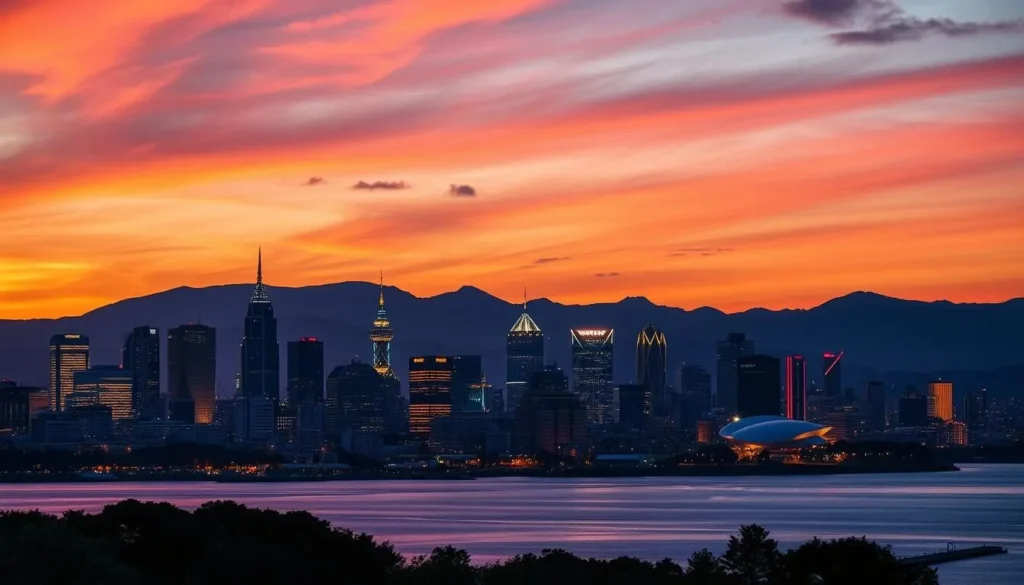
—
The above is subject to change.
Check back often to TRAVEL.COM for the latest travel tips and deals.
